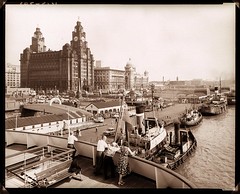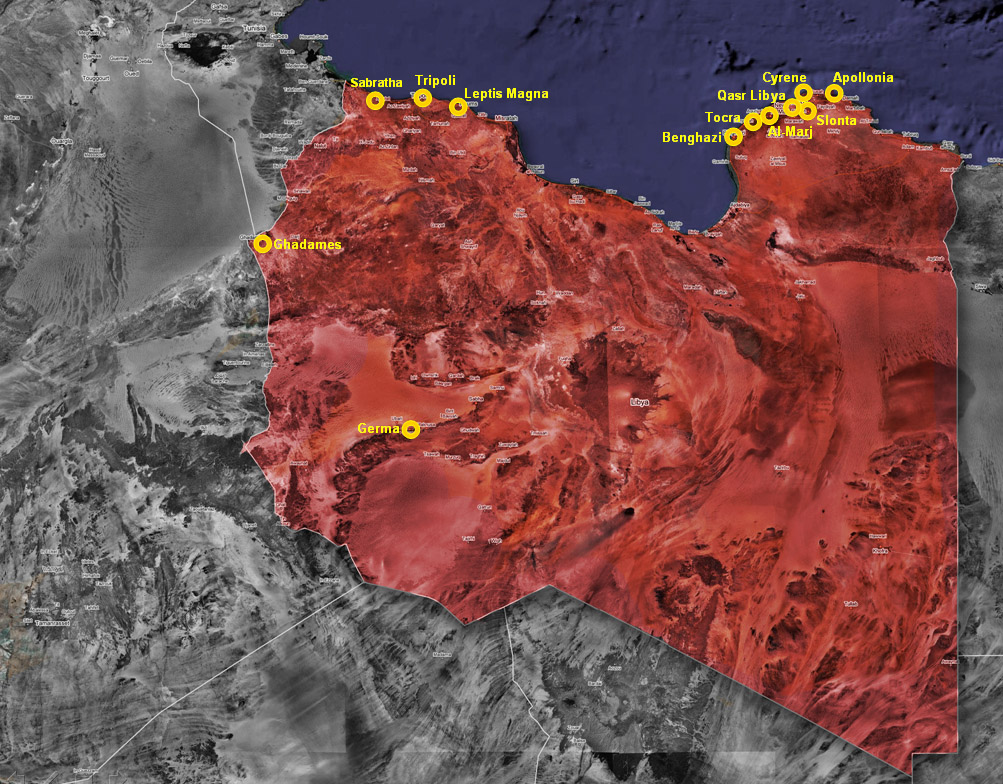When Cameras Inside Museums Are Forbidden: Web2.0 and Copyrights
Published by Pilar Gonzalo on 18 de diciembre de 2006 at 8:14.Among the main qualities of Web2.0 I like most are that it is: diverse, creative, generous, laid-back, useful, and contradictory. Today I will focus on the two last ones: usefulness and paradoxes. As in all Guggenheim Foundation Museums, Guggenheim-Bilbao Museum does not allow visitors taking pictures or recording videos inside the building. This policy maybe had any relation with art works' copyright or more probable indeed, with Frank Gehry's copyright and any possible commercial use of the Guggenheim Foundation images. However, it is my belief that this policy is pretty outdated, moreover, it is unfair for visitors and it definitively works against the institution itself. Since visitors are paying their entrance to the building, any potential copyright issue should be considered part of the ticket fare, as it could be the case regarding museum's maintenance expenses, personnel, etc. That used to be the reason why visitors get upset whenever they realize they are not allowed to use cameras inside the Guggenheim Museums: because they had already paid the ticket and they do not want to pay two times for the same thing. Maybe you were right now thinking that this is because of artists' copyright reasons and that artists should be paid back in case of any audiovisual dissemination of their work. Of course that is something I totally agree with, but ideally this should be previously negotiated between the museum and the artists themselves without being a trouble for visitors. It should be a real issue if the Guggenheim Foundation was not able to negotiate the rights of its temporary exhibitions, or even worse, if it did not hold the rights of its own collection. In addition to this, any possible missuse of the images taken would be the responsability of the person publishing them, not of the museum. So let us say that the Foundation has under control all these copyrights. In that case, anybody could think that what really happens is because of a commercial strategy to control all images of the museum to further sell them, renting the space and/or the right to take images inside. In other words, the Guggenheim Foundation seems to be choosing exclusivity as its management policy, something that is really opposite to Web 2.0 principles and new trends among general public and art museum's visitors/users. The video linked above is a fragment of the DVD Architectures, Vol. 4 (2005) produced by Facets Multimedia. I can guess that the company paid a good amount of money for being allowed to record inside both the building and behind the scenes. Although probably the original DVD holds any copyright, this documentary production is however available in Google Video, and it is free. Despite its image quality is really bad, this online copy permits us to share its contents in this vlog and to let some others to know and experiment the wonders of Guggenheim-Bilbao Museum. What is more, I am sure that after posting this video on Sociable Museums, some of you will feel curious and willing to visit it (and paying the ticket.) In the meanwhile, enjoy this interesting video available for downloading here. | |
Etiquetas: .es, Copyrights, Forbidden, Guggenheim, Museums, Sociable Museums, Web 2.0
Cuando las cámaras dentro de los museos están prohibidas: Web2.0 y derechos de reproducción
Published by Pilar Gonzalo on at 8:03.Entre las principales cualidades que más me gustan de la Web 2.0 están que es: diversa, creativa, generosa, relajada, útil y contradictoria. Hoy me centraré en las dos últimas: utilidad y paradojas.
Como en todos los museos de la Fundación Guggenheim, el Museo Guggenheim-Bilbao no permite a sus visitantes sacar fotografías o grabar vídeos dentro del edificio. Esta política tal vez tenga alguna relación con los derechos de las obras de arte o, mucho más probablemente, con los derechos de reproducción del arquitecto Frank Gehry así como un posible uso comercial de las imágenes de la Fundación Guggenheim. No obstante, es mi creencia que esta política se encuentra bastante desfasada y lo que es más, es injusta para los visitantes y va definitivamente en contra de la propia insititución.
Desde el momento en que los visitantes están pagando su entrada al edificio, cualquier posible asunto relacionado con derechos de reproducción debería ser considerado parte del coste de la entrada, como podría ser el caso en lo referente a los gastos de mantenimiento del museo, personal, etc. Esa suele la razón por la cual los visitantes se sienten molestos cuando se dan cuenta de la prohibición de usar cámaras en los museos Guggenheim: porque ya han pagado la entrada y no quieren pagar dos veces por la misma cosa.
Tal vez ahora estés pensando que ello se debe a los derechos de reproducción de las obras de los artistas y que éstos deberían recibir dinero en caso de cualquier posible difusión audiovisual de sus trabajos. Por supuesto eso es algo con lo que estoy profundamente de acuedo, pero lo ideal sería que eso estuviera ya negociado de antemano entre el museo y los propios artistas sin suponer un problema para los visitantes. Sería un aunténtico problema si la Fundación Guggenheim no fuera capaz de negociar los derechos de sus exposiciones temporales o, lo que es peor, si no tuviera los de su propia colección. Además, el posible uso ilegal posterior de las imágenes sería siempre responsabilidad de quien lo comete, no del museo.
De modo que supongamos que la Fundación tiene bajo control todos estos derechos de reproducción. En tal caso se podría pensar que lo que realmente sucede es debido a una estrategia comercial para controlar todas las imágenes del museo y posteriormente, venderlas, alquilar el espacio y/o el derecho de obtener imágenes dentro. En otras palabras, la Fundación Guggenheim parece elegir la exclusividad como política de gestión, algo que realmente es contrario a los principios de Web 2.0 y las nuevas tendencias entre el público en general y los visitantes/usuarios de museos de arte.
El vídeo incluído arriba es un fragmento del DVD Architectures, Vol. 4 (2005) producido por Facets Multimedia. Podemos imaginar que la compañía pagó una buena cantidad de dinero para ser autorizada a grabar tanto dentro del edificio como entre bastidores. Aunque probablemente el DVD original tenga derechos de reproducción, esta producción documental se encuentra sin embargo disponible en Google Video, y es gratis.
Pese a que la calidad de su imagen es francamente mala, esta copia en internet nos permite compartir los contenidos de este documental en nuestro vlog y así dejar que otros conozcan y experimenten las maravillas del Museo Guggenheim-Bilbao. Es más, estamos seguros de que tras publicar este vídeo en Sociable Museums, algunos de vosotros sentiréis curiosidad y desearéis visitarlo (y pagar la entrada).
Entretanto, disfrutad de este interesante vídeo disponible aquí para su captura.
Etiquetas: .es, Copyrights, Guggenheim, Museos, Sociable Museums, Web 2.0
Web 2.0 Photographic Project by National Museums Liverpool
Published by Pilar Gonzalo on 7 de diciembre de 2006 at 5:39.

In our former blog (disappeared at the end of August because of the mysteries of technology) we were telling that the organization National Museums Liverpool (United Kingdom) had organized a Web2.0 photographic project to document Liverpool. The project was called “Stewart Bale 2.0” and it was based in the Stewart Bale Ltd. Photographic Collection owned by National Museums Liverpool.
The organization invited both amateur and professional photographs using Flickr, to recreate the photographs of its collection. The project is currently an online photography exhibition.
This initiative is a wonderful example of how Web2.0 (a new generation of internet services which make use of collaboration, shared participation and tagging to crate 'social software') not only can engage new audiences to art museums, but also can get their collections being revisited by contemporary visions.
As it can be seen, it is not necessary having a contemporary art collection to understand new audiences and their relation with technology. Fortunately, there is an increasing number of museums understanding it in this way.
Images: Stewart Bale: Pier Head, 1959 (original) (left); Pete Carr: Pier Head, 2006 (right)
Etiquetas: .uk, Art, Collections, Flickr, lamusediffuse, Museums, National Museums Liverpool, Photos, Sociable Museums, Social Software, Web 2.0
Proyecto fotográfico Web 2.0 de National Museums Liverpool
Published by Pilar Gonzalo on at 5:09.

En nuestro anterior blog (desparecido a finales de agosto por los misterios de la tecnología) contábamos que la organización National Museums Liverpool (Reino Unido) había organizado un proyecto fotográfico Web2.0 para documentar Liverpool. El proyecto fue llamado “Stewart Bale 2.0” y estaba basado en la colección de fotografías de Stewart Bale Ltd. que posee National Museums Liverpool.
La organización invitó a fotógrafos tanto profesionales como aficionados que utilizan Flickr, a recrear las fotografías de la mencionada colección. El proyecto es en la actualidad una exposición de fotografía en internet.
Esta iniciativa constituye un magnífico ejemplo de cómo 'Web 2.0' (una nueva generación de servicios en internet que hacen uso de la colaboración, la participación compartida y el etiquetado para crear “software social”), no sólo puede atraer nuevos espectadores a los museos de arte, sino que sus colecciones pueden ser revisitadas por miradas contemporáneas.
Como se puede ver, no es necesario que los museos tengan colecciones de arte contemporáneo para entender el carácter contemporáneo de sus audiencias y su relación con la tecnología. Afortunadamente, ya van siendo muchos los museos que así lo están entendiendo.
Imágenes: (véanse en la versión en inglés de este mismo artículo): Stewart Bale: Comienzo del muelle, 1959 (original) (izquierda); Pete Carr: Comienzo del Muelle, 2006 (derecha)
Etiquetas: Arte, Colecciones, e-artcasting, Flickr, Fotos, lamusediffuse, Museos, National Museums Liverpool, Reino Unido, Software social, Web 2.0

These last days I have been very busy trying to find information about museums in Libya to ellaborate a map of museums in that country.
Unfortunately, the International Council of African Museums (AFRICOM) is not including in its website information about Libyan Museums. However, they are wonderful institutions which specifically need of more visibility to be recognized as they should be in the international landscape. That is the reason why after an intense search in the Social Web, I have elaborated this map which gathers and places all museums we are aware of. Now, thanks to the Web 2.0 tools, it is my pleasure to share this map of Libyan Museums with all of you.
Do not forget to check e-artcasting Photoproject and add your comments and tags to the image.
Images: lamusediffuse: Map of Museums in Libya, 2006
Etiquetas: Africa, Flickr, Libya, Map, Museums, Photos, Sociable Museums, Social Software, Web 2.0

Estos últimos días he estado bastante ocupada tratando de localizar información sobre museos en Libia con la que poder elaborar un mapa de museos de ese país.
Desgraciadamente, el Consejo Internacional de Museos Africanos (AFRICOM) no incluye en su página web información sobre los museos libios. Sin embargo, se trata de magníficas instituciones, precisamente necesitadas de más visibilidad para ser reconocidos como deberían en el panorama internacional. Es por eso que tras una intensa búsqueda en la web social he confeccionado este mapa que reúne y sitúa todos los museos de los que he tenido constancia. Ahora, gracias a las herramientas Web 2.0, tengo el placer de compartir este mapa con todos vosotros.
No dejéis de consultar nuestro Proyecto Fotográfico en Flickr y añadir vuestros comentarios y etiquetas en la imagen.
Imagen: lamusediffuse: Mapa de museos en Libia 02, 2006
Etiquetas: África, Flickr, Fotos, Libia, Mapa, Museos, Sociable Museums, Software social, Web 2.0
